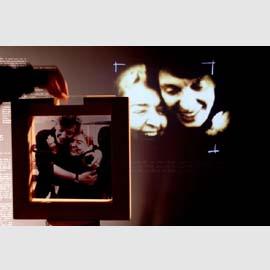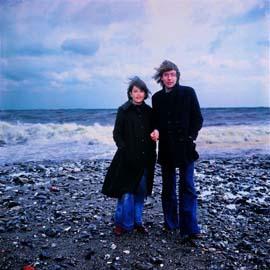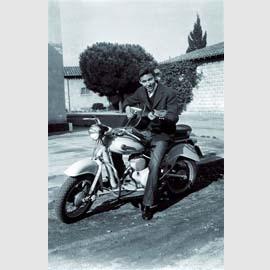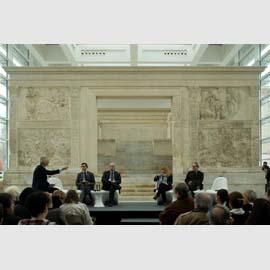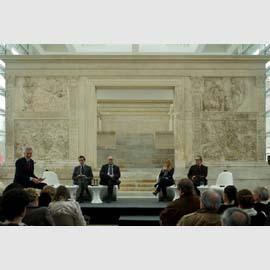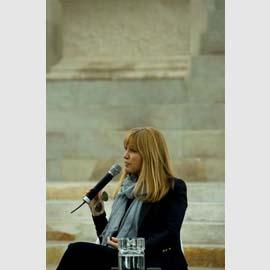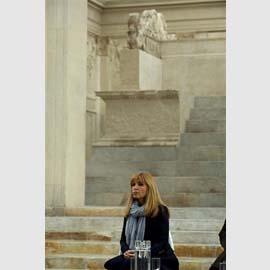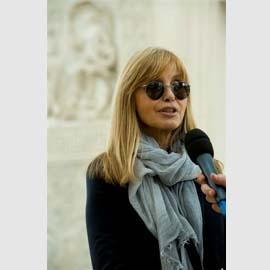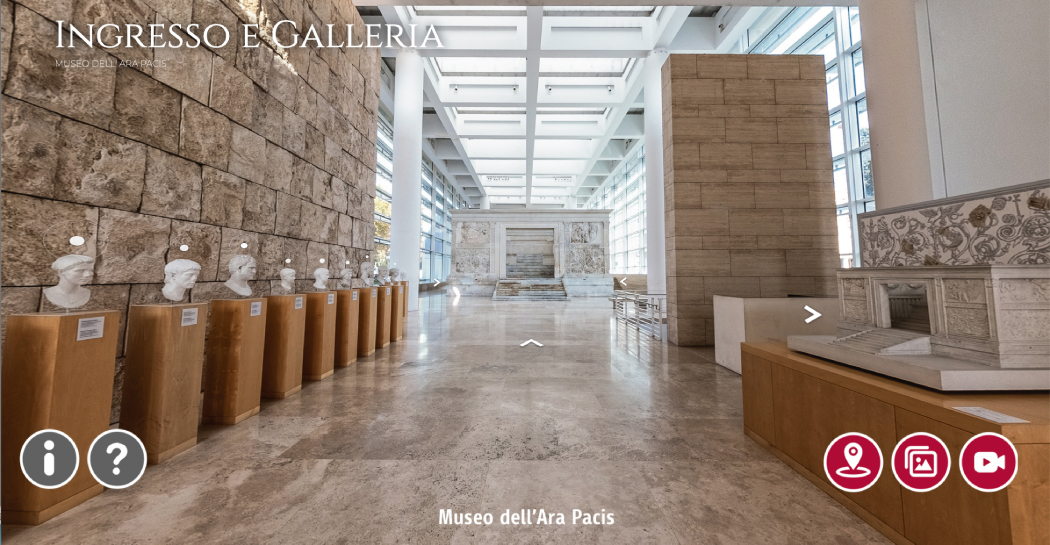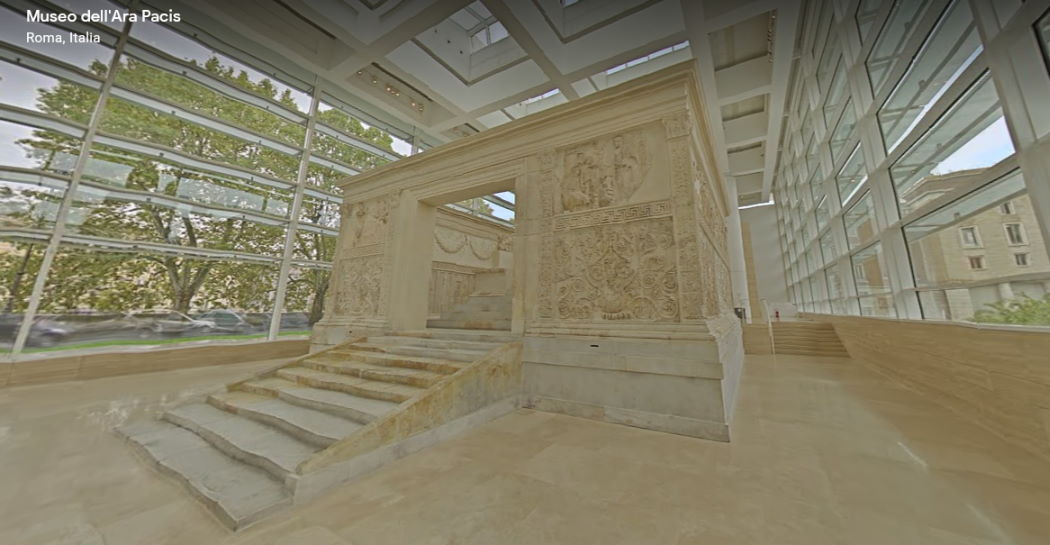Fabrizio De André. The Exhibition
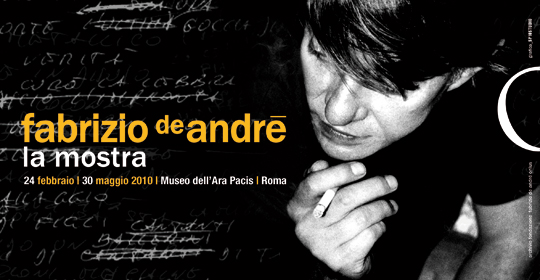
Arriving in Rome just one week after the 70th anniversary of the birth of Fabrizio De André, the multi-medial, inter-active exhibition, put together by Studio Azzuro, lays out the life, music, experiences and passions that made “Faber”, as he was sometimes known, such a unique and universal artist.
Following close behind Genoa and Nuoro, Rome now takes its turn to pay tribute to Fabrizio de André, hosting “ Fabrizio De André. La Mostra”, in the exhibition area of the Ara Pacis Museum between 24 February and 30 May 2010. This multi-medial event, put together by Studio Azzuro, considered to be one of world’s most prestigious video-art groups, opens just one week after the singer-songwriter would have celebrated his 70th birthday – on February 18th. It tells the story of his life, his music and the passions that made him such a singular and cosmopolitan performer and one that in some cases, anticipated the changes and evolution that contemporary music would undergo. The use of virtual, multi-medial and interactive material guarantees visitors an emotional experience - one that will enable each person to relate to “Faber’s” world on an entirely personal level. The tale told, and the visual, textual and musical presentations are extremely evocative and full of sentiment, and the format is such that each visitor can choose which aspect of “Faber’s” world they want to explore and discover in greater depth, each according to their own life’s experience.
The exhibition sets about exploring the major themes that run through De André’s poetry: the affluent society and economic boom of the 60s, social outcasts and the down-trodden, freedom, anarchy and ethics, writers and political and/or satirical songwriters, women and love, the exploration of music and language, current affairs and the places that played a role in his life. Whatever the theme, he was able to reach out to people on both a personal and a universal basis, and his work is still loved by people from all walks of life and of all ages.
The exhibition route
Section One – His poetry
Visitors are welcomed into this area by six transparent screens, each 100 x 200 cm, arranged in an optical perspective, each dedicated to one particular theme: Genoa, love, war, death, anarchy, the lowliest. Visitors are able to explore each theme in greater depth through the manuscripts of some of his songs, enhanced through the use of newsreels, photographs and video interviews with the author himself. His life can also be explored by reading the words of some of his songs written – in both temporary and permanent fashion – on the walls: from his “Canzone del Maggio” to “Creuza de ma”, his work in progress “La domenica delle salme”, and the working notes made for an album that was never finished - “Nocturnes” – which would have followed-on from “Anime salve”.
Section Two – His Music
Here, visitors are taken on an inter-active journey that takes them through the many records released by Fabrizio. By selecting one of a series of small panels that portray the covers of his major studio records, and placing it on the special multi-media console, an entire series of projections are launched. It enables visitors to “meet” Fabrizio, his friends and collaborators along with the critic, Riccardo Bertoncelli, place that record in its particular historical and social context, as well as learning about the writing and recording mechanisms adopted etc. Video clips of TV and concert performances add to the overall experience.
Various display boards present the artist’s entire official record production, starting with his first- ever 45 rpm, “Nuvole barocche”, together with a few rare “titbits” such as the original record masters of the first Karim discs, playbills practically impossible to find now, various graphic elements, and photo contact sheets of shots taken during recording sessions used from which the covers of some of his most famous records were selected. Other photographs make up a sort of mini-gallery of pictures taken by photographers who followed De André throughout his career, including Mimmo Dabbrescia, Luca Greguoli, Guido Harari, Reinhold Kohl, Francesco Leoni and Cesare Monti.
Section Three – people and their character boards
Here, visitors get to “meet” the characters featured in Fabrizio’s songs. Three screens have been set up between the original character boards created by Pepi Morgia for the set used during the “Le Nuvole” tour and are of exactly the same size and shape. They are however virtual character boards that hold 31 different characters: Miché, Nina, the madman, Geordie, Piero, Marinella, Teresa, Roselips, the optician, the bomber, Angiolina, Sally, Carlo Martello, Andrea, Prinçesa, the gorilla, the judge, Jones the musician, Jamina, the gypsies of “Khorakhané”, the fisherman, Franziska, Suzanne, Maddalena, Tito, Nancy, Sinan Capudan Pascià, the layabout, the “Sunday” hookers and Death.
Using a touch screen, visitors can choose their favourite character and then create a personalized character board by selecting elements from a whole range of images and graphics and even include some lyrics. Visiting the exhibition’s website (www.fabriziodeandrelamostra.com) provides an opportunity to further personalize one’s own character. Once completed, these personalized character boards will be projected in a loop onto another screen
Fabrizio’s piano can be found in an adjoining room - the one that looked so good in the main salon in Villa Paradiso, the very same piano that features in photos of the singer-songwriter as a young man.
The other feature of this section is the Cinema, where a more than five-hour long show featuring Fabrizio has been put together from un-cut film taken from the RAI’s television archives, shown here for the very first time, along with many other clips that have never been seen at all. Put together by well-known journalist Vincenzo Mollica, they include appearances by De André in various TV shows, interviews and concerts, together with more private moments too.
Section Four – His life
This section holds a detailed chronology illustrated by large photographic prints made especially for the occasion. Visitors can view any of the 25 images reproduced on Plexiglas “plates” by placing them in frames set up on easels in a stylized version of the old souvenir / children’s “slide” cameras. Once positioned, the plates will play a series of images, films, video-interviews and more besides, each plate being linked to a particular period of Fabrizio’s life.
The Niche in the Wall beneath the Ara Pacis - the mementoes of a lifetime
Four display cases hold a selection of important mementoes of a lifetime: notes written by Fabrizio to his mother Luisa as a young boy in which he begs her forgiveness for his scholastic shortcomings, a biography of Fabrizio written by hand by his mother to give to journalists and a few books and diaries dotted with notes about work and quotations. There’s a letter to the poet Mario Luzi and another, quite dramatic in fact, written by Fabrizio to his father Giuseppe during the time he was kidnapped and held on Supramonte (a mountain in Sardinia) also signed by Dori, his companion, and an annotated ephemeris (a book giving the positions of the sun, moon, and planets) that as a true astrology buff he carried with him at all times. A draft of “Smisurata preghiera” (infinite prayer), a work in progress considered to be Fabrizio’s spiritual testament, holds the place of honour in the centre of the Niche, together with the Spanish version, “Desmedida plegaria”, in the wonderful translation executed by Colombian poet Alvaro Mutis, performed by De André in the film “Ilona viene con la pioggia”, but never recorded on disc. It is also here that you will find a series of precious xylographs by the American artist Stephen Alcorn, a great admirer of De André’s work.
It is an exhibition that encourages visitors to be active participants, to choose which aspect of “Faber” they want to pursue further, according to their own life’s experience and to trace their own route through an exhibition that is not divided into strict timelines or themes but which sets out to provide a visual, textual and musical story filled with both sentiment and fascination.
Silvana Editoriale
Information
From Tuesday to Sunday hours 9.00-19.00 .
Full price € 9
Reduced € 7
Tickets and reservations
The ticket office closes an hour in advance
060608 everyday h. 9.00 a.m. - 9 p.m.
Banche Tesoriere del Comune di Roma: BNL – BNP Paribas, UniCredit Banca di Roma, Monte dei Paschi di Siena, il Gioco del Lotto, Atac, Vodafone.
Main Sponsor ERG
La Repubblica, Dimensione Suono Roma Due, Parcheggio di Villa Borghese Saba Abertis
Catalogo
Press Room
Gallery
50434
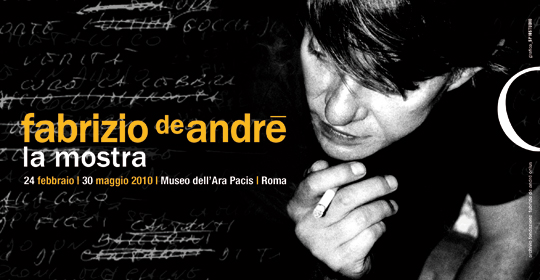
51250






























